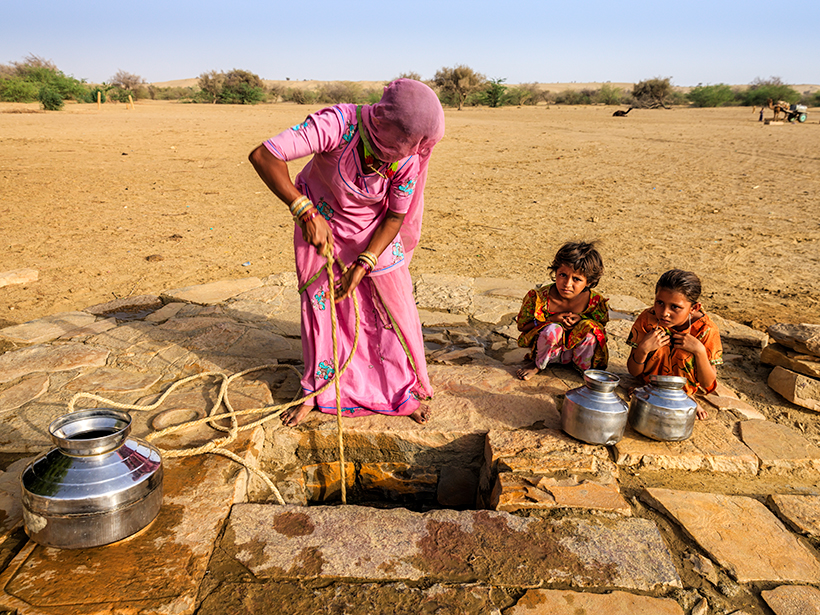Source: Geophysical Research Letters
The largest aquifers in the world are a vital source of freshwater for agriculture and other human uses. During times of drought, these resources are crucial to food security; understanding groundwater storage and depletion is vital, especially as climate change worsens drought conditions.
Remote sensing allows researchers to get an accurate look at water storage dynamics on a global scale. NASA’s Gravity Recovery and Climate Experiment (GRACE) satellites measure monthly gravitational anomalies that can be used to track changes in aquifer groundwater storage. However, these data alone are not enough to determine the sustainability of aquifers over time or gauge how sustainability may be affected by anthropogenic influences.
To tackle this problem, Thomas et al. paired GRACE data with specific sustainability indicators to analyze the world’s largest aquifers. They incorporated groundwater storage data from their GRACE Groundwater Drought Index (GGDI) tool and focused on three primary performance indicators: reliability, resilience, and vulnerability. These indicators, typically used in water resources systems, characterize the likelihood of the aquifer’s ability to be used dependably in the future.
Aquifers in arid regions like the Sahara, the Arabian Peninsula, and California’s Central Valley exhibited high vulnerability and low resilience. These aquifers are overstressed and nonrenewable; however, their large storage capacity can make up for slow recharge time, so they also ranked as more reliable. In contrast, aquifers in northern latitudes and regions with high precipitation had low reliability scores but high resilience scores due to faster recharge. Because vulnerability is largely influenced by groundwater recharge, the least vulnerable aquifers were found in lush regions like equatorial Africa and northern Europe and Asia.
Next, the researchers calculated a sustainability index to track changes across all three performance indicators. The least sustainable aquifers were located in the Sahara, the Arabian Peninsula, and northern India; the team found that sustainability was determined by patterns in groundwater use, as well as by aquifer response to withdrawals and natural variability. Ultimately, combining GGDI data with the new sustainability indicators provides a new method of quantifying and monitoring aquifer sustainability through time and continued use.
This study demonstrates the importance of an integrated approach to assessing aquifer sustainability and the factors that influence it. A new metric of unique sustainability indicators for aquifers can be used to improve water resources management in a warming world. (Geophysical Research Letters, https://doi.org/10.1002/2017GL076005, 2017)
—Lily Strelich, Freelance Writer
Citation:
Strelich, L. (2018), A closer look at the sustainability of our groundwater aquifers, Eos, 99, https://doi.org/10.1029/2018EO108147. Published on 19 October 2018.
Text © 2018. The authors. CC BY-NC-ND 3.0
Except where otherwise noted, images are subject to copyright. Any reuse without express permission from the copyright owner is prohibited.

